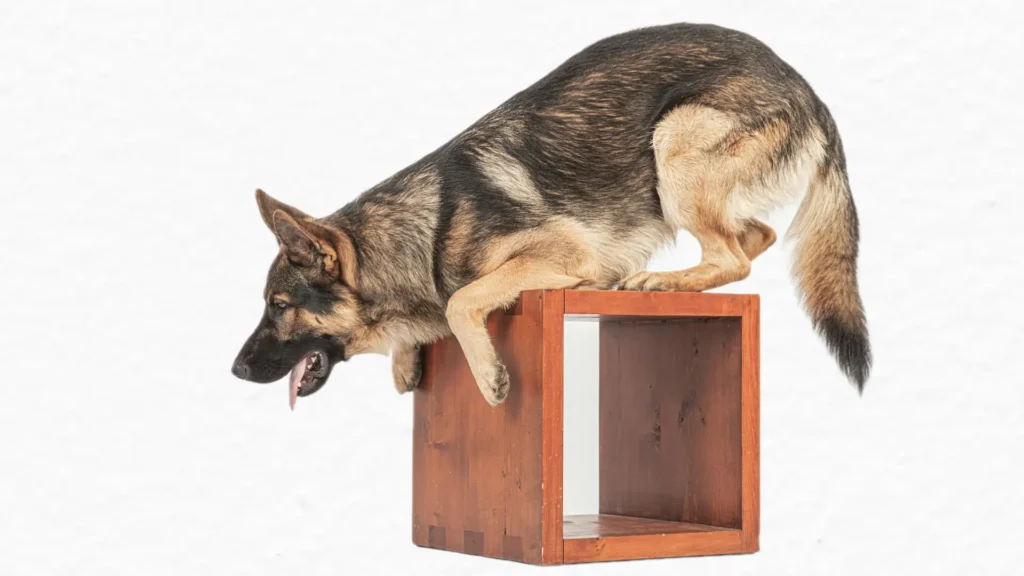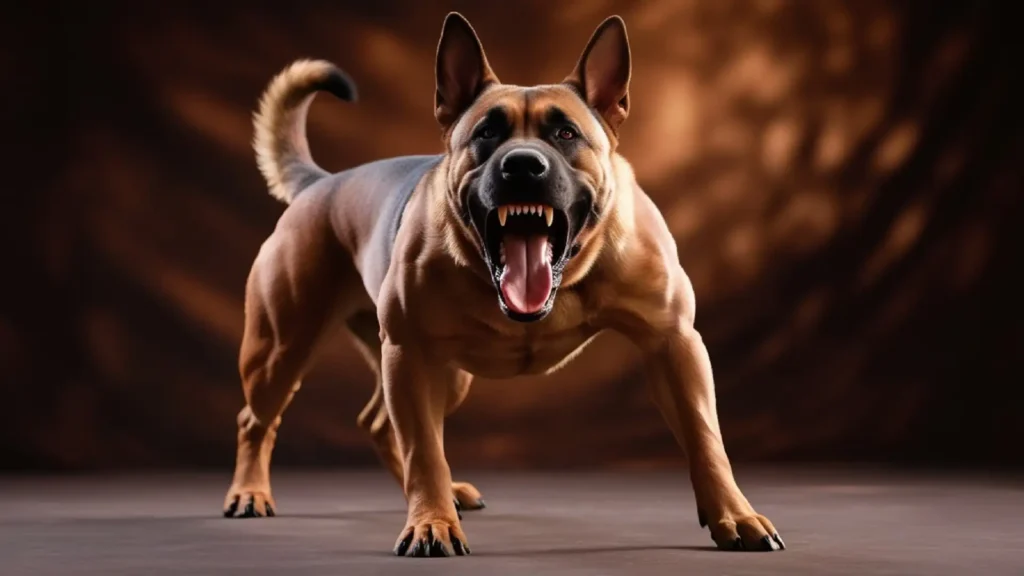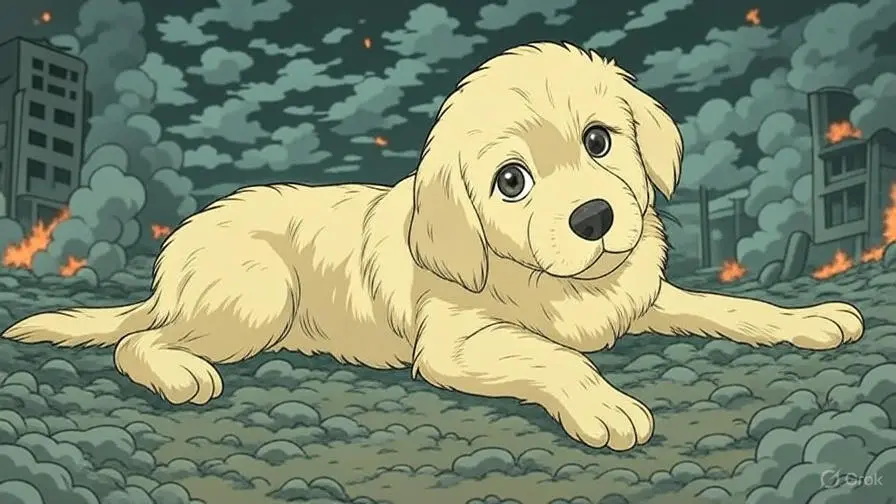Regular exercise is crucial for a dog’s overall happiness. Without it, you might end up with chewed furniture, excessive barking, or a sulky pup. Rainy days throw a wrench in your dog’s routine. These leave them restless.
The good news? You don’t need a sunny backyard to keep your dog active. With a little creativity, you can turn your home into a playground of fun and engaging activities.
Below is a guide to dog exercise ideas for rainy days.
Indoor Obstacle Course
Turn your living room into an agility-inspired obstacle course to challenge your dog’s body and mind. This activity is perfect for burning energy and boosting confidence. Here’s how to set it up:
Use household items like chairs, broomsticks, blankets, pillows, cardboard boxes, and laundry baskets. For example, prop a broom between two chairs for a low jump, stack pillows for a hurdle, or drape a blanket over a coffee table to create a tunnel.
Arrange obstacles in a sequence that suits your space and dog’s abilities. Start simple. Create a tunnel to crawl through, a pillow to hop over, and a box to weave around. For advanced dogs, add complexity. Create a slalom course with water bottles or a pause point where they must “sit” before moving on.
Guide your dog through the course using a treat, toy, or verbal cues. Reward small successes to build enthusiasm. Before doing so, teach them basic commands. Use “over,” “through,” or “weave” to make it interactive.
For high-energy, increase the speed and add more obstacles. For smaller dogs, keep jumps low and tunnels wide. Time their runs for a fun challenge. Add a toy-retrieval element at the end.
These indoor courses build agility, strengthens muscles, and sharpens focus. It’s also a great bonding activity. Ensure obstacles are stable and floors aren’t slippery. Supervise closely to prevent crashes. If your dog is new to agility, start with one obstacle at a time. A treat trail can lure hesitant dogs through tunnels.
Tug-of-War
Tug-of-war is a high-energy game. It taps into your dog’s natural instincts, and provides a great physical workout in a small space.
To tug-of-war, you need a sturdy rope toy, braided fleece, and an old towel knotted at both ends. Avoid toys that shred easily to prevent choking hazards.
Hold one end and let your dog grab the other. Pull gently at first. Let them win occasionally to boost confidence. Use commands like “take it” to start and “drop it” to end the game. Keep sessions short (2–3 minutes) to avoid overexcitement.
Alternate tugging with brief pauses to teach impulse control. For mental stimulation, hide the tug toy before the game and make them find it first. For strong pullers like Pit Bulls, use a thicker rope to withstand their grip.
This game strengthens jaw and neck muscles, burns energy, and reinforces training commands. It’s also a fun way to build trust. Skip this game with dogs prone to aggression. Avoid jerking the toy suddenly to protect their teeth and neck. Pair tug with a quick training session afterward (e.g., “sit” or “stay”) to channel their excitement into focus.
Hide-and-Seek
Hide-and-seek is an interesting game for rainy day. Your dog will love playing this game. This game taps into your dog’s natural scenting ability. It provides mental stimulation that’s as tiring as a physical workout.
Start with treats or a favorite toy. Show your dog the item, then hide it in an easy spot. Say “find it!” and let them sniff it out. Gradually increase difficulty. Try hiding treats in a closed box, under a blanket pile, or on a low shelf (if safe). Alternatively, hide yourself and call their name softly. Reward them with praise or a treat when they find you.
For scent hounds like Beagles, use smelly treats to ramp up the challenge. For toy-driven dogs like Retrievers, hide a squeaky toy to spark their prey drive. Add multiple hiding spots to keep them searching longer.
This paly sharpens problem-solving skills, engages their nose, and builds confidence. It’s ideal for dogs of all ages.
Avoid hiding items in fragile or off-limits areas. Supervise to ensure they don’t chew non-food items while searching. If your dog struggles, guide them to the hiding spot with a trail of tiny treats or point subtly to build their confidence.
Stair Sprints
If you have stairs, they’re a built-in exercise tool for a quick, heart-pumping workout. Stand at the bottom and toss a toy to the top of the stairs. Encourage your dog to race up, then call them back down for a reward. Repeat 3–5 times, depending on their energy level. Add variety by changing the toy.
For advanced dogs, have them carry the toy back down or pause halfway for a “sit” command. For high-energy breeds, increase repetitions and speed. If your stairs are wide, try side-by-side races (you climb too!).
Stair sprints boosts cardiovascular health, strengthens legs, and burns off pent-up energy fast. Skip this for puppies, seniors, and breeds prone to hip dysplasia. Ensure stairs are non-slip and supervise to prevent falls. Cheer them on with an excited tone to keep their adrenaline pumping. A quick belly rub at the end makes it extra rewarding.
Interactive Puzzle Toys
Puzzle toys are a lifesaver for mental stimulation. They keep your dog focused and content during rainy days.
Try treat-dispensing toys like a Kong Wobbler, Nina Ottosson puzzle boards, and snuffle mats. For DIY fun, stuff a muffin tin with tennis balls and hide treats underneath for them to uncover. Start with easy puzzles to avoid frustration. For example, fill a Kong with peanut butter and kibble. Then freeze it for a 30-minute challenge. For puzzle boards, show your dog how to slide or lift pieces to reveal treats. Gradually introduce harder levels as they improve.
For Poodles or Corgis, use multi-step puzzles that require flipping and sliding. For food-motivated dogs, scatter kibble in a snuffle mat to mimic foraging. Rotate toys weekly to keep them novel.
These toys reduce boredom, curbs anxiety, and satisfies their need to work. It’s perfect for dogs recovering from surgery. Choose durable toys suited to your dog’s size and chewing strength. Remove puzzles after use to prevent chewing on non-edible parts.
If your dog gives up, sprinkle high-value treats to reignite their interest. Watch their tail wag as they crack the code!
Indoor Fetch with a Twist
Fetch doesn’t require a big yard. Your hallway or living room work just fine with some tweaks.
Clear a safe path (move vases or lamps!). Use a soft toy, lightweight ball, and a rolled-up sock. Toss it gently and encourage your dog to bring it back. If space is tight, roll the toy instead of throwing it. Add training elements like “wait” before they chase or “drop it” when they return.
For fetch fanatics like Golden Retrievers, use a squeaky toy to heighten excitement. For a mental twist, toss two toys and ask them to retrieve a specific one by name (e.g., “get the bear!”). In tiny spaces, bounce a ball off a wall for them to catch.
Indoor fetch keeps their chase instinct satisfied, improves coordination, and reinforces recall skills. Avoid hard balls or heavy toys that could break things. Stop if your dog gets too wild to prevent indoor chaos. If your dog won’t return the toy, trade it for a treat to encourage bringing it back. It’s a sneaky way to practice “drop it.”
Training Sessions

Rainy days are a golden opportunity to polish your dog’s manners. Teach them something new. Turn exercise into a brain workout.
Review basics like “sit,” “stay,” or “leave it.” Try fun tricks like “spin,” “roll over,” “crawl,” and “bow.” Advanced dogs can learn sequences, like fetching a specific item (e.g., their leash).
Keep sessions short (5–10 minutes) to maintain focus. Use high-value rewards. Break tricks into small steps; for example, lure a “spin” by holding a treat near their nose and guiding them in a circle.
For young dogs, stick to simple commands with frequent rewards. For focused breeds, chain tricks together (e.g., “sit, down, spin”). Turn it into a game by timing how many commands they can do in a minute.
Training builds obedience, boosts confidence, and tires them mentally. It’s great for puppies learning manners or seniors staying sharp. Train on a non-slip surface and avoid over-repeating tricks. End with a trick they love to keep it positive. A “high-five” finale always brings smiles!
Scent Games
Scent games are low-impact but highly engaging. It let your dog use their nose to “hunt” indoors. This is a easy way to engage your dog in rainy days.
Grab 3–5 empty boxes (e.g., yogurt tubs). Place a smelly treat in one and shuffle them while your dog watches. Say “find it!” and let them sniff out the reward. Level up by hiding the treat under a towel, in a drawer (slightly open), or behind furniture. For a twist, scatter kibble across a room and let them forage.
For scent-driven dogs, use multiple containers and hide treats in several. For toy breeds like Pomeranians, start with one obvious hiding spot. Add a timer for competitive fun or use a “which hand?” game, holding a treat in one fist.
Scent games stimulate their brain, mimics natural foraging, and calms anxious dogs. It’s ideal for all ages and energy levels. Use dog-safe containers and supervise to prevent chewing. Clean up food scraps to avoid attracting pests. If your dog loves it, invest in a snuffle mat.
Indoor Agility Drills
Bring the thrill of agility indoors with scaled-down drills tailored to your space. Your dog will forget the rain outside.
Create jumps with broomsticks on books, a weave course with plastic cups, or a hoop (hula hoop or pool noodle circle) for jumping through. A line of tape can mimic a balance beam for them to walk across. If you have a folding table, lower it for a pause table where they sit.
Lead them through each element with a treat. Use commands like “jump,” “weave,” or “stay.” Start slow. Reward each step. Build a mini-circuit—jump, weave, pause—for a full workout.
For agile breeds, add speed and tighter turns. For less nimble dogs, focus on simple tasks like stepping over a single bar. Increase difficulty by adding distractions.
Indoor agility drills improve coordination, builds muscle, and boosts confidence. It’s a great outlet for dogs used to outdoor agility. Ensure obstacles are low and secure. Avoid high jumps for large breeds. Take photos of your dog or film their runs to track progress. It’s also hilarious to watch their enthusiasm grow!
Doggie Dance Party
Arrange a doggie dance party in these rainy days. It is a lighthearted way to get your dog moving while lifting both your spirits.
Play upbeat music and move around—jump, spin, or shimmy. Encourage your dog to follow with claps, whistles, and a toy. Incorporate commands like “come,” “spin,” or “up”. Toss treats for extra motivation.
For playful dogs, add silly props like a scarf to chase. For calmer dogs, keep movements slow and fluid. Teach a dance move like weaving between your legs for a crowd-pleaser.
Dance burns energy, improves coordination, and strengthens your bond. It’s pure joy for high-spirited pups. Avoid encouraging jumps for dogs with back issues. Keep the vibe positive to prevent overstimulation. Pick a theme song for your dog.
Food-Dispensing Toys
Turn mealtime into exercise with toys that make your dog earn their kibble.
Use a treat ball, a wobble feeder, or a DIY version. For variety, hide small amounts of food in multiple toys around the house. Fill the toy with their meal and let them roll, paw, or nudge it to release the food. Start with easy settings and tighten as they learn. For group fun, give each dog their own toy to avoid squabbles.
For voracious eaters, use a slow-feeder bowl with obstacles. For clever dogs, combine a treat ball with a hide-and-seek game (hide the ball first). Freeze wet food in a toy for a longer challenge.
This game slows eating, reduces boredom, and mimics hunting. Great for dogs prone to gulping food. Match the toy to your dog’s size and chewing style. Check for wear to avoid choking hazards. If they’re stumped, roll the toy yourself to show them how it works. A little demo goes a long way.
Exercise isn’t just about physical health. It’s a lifeline for your dog’s mental state. These activities also deepen your bond, turning rainy days into memories of play and laughter. Plus, a well-exercised dog is less likely to “reorganize” your shoe collection.




